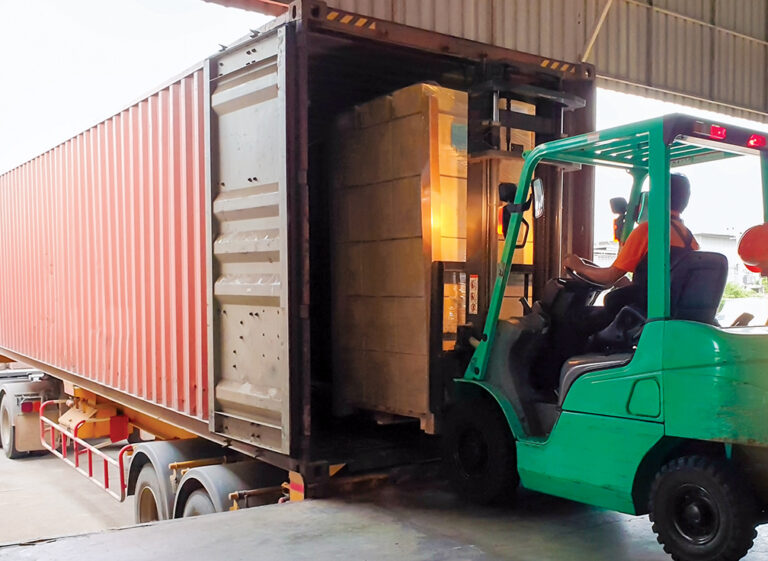Carriers that depend on spot freight rates for their business are in for a rough go in the coming months.
On the other hand, carriers that depend on contract rates for their business are likely to earn near-record revenues for 2022 and will have an easier time riding out the coming recession.
Those two statements seem to be the consensus among the firms that track and analyze the data from various resources. It’s a reasonable prediction, because spot rates are more volatile than contract rates. Spot rates can change overnight, while contract rates depend on — well, as the name suggests, negotiating a new contract. In summary, whatever spot rates do, contract rates will most likely follow, but months later.
At the time of this writing, we’re at a point in the trucking cycle where spot rates have been falling steadily for months. According to DAT Freight and Analytics, dry van spot rates on their board fell 4.2% in August from July levels, while flatbed rates fell 7.4% and refrigerated rates fell 3.3%.
Perhaps a more telling statistic is the “load-to-truck” ratios reported by DAT. When truckers have more loads to choose from, rates tend to rise as competition for trucks intensifies.
The opposite is occurring now. Load-to-truck ratio for dry van fell 7.9% in August, the refrigerated ratio fell 2.2% and the flatbed load-to-truck ratio fell 35.2%. With less competition to find trucks to move product, spot rates continued to fall.
Things were a little rosier on the contract side.
Freight volumes grew by 6.6% in August, according to data released by Cass Information Systems. Compared with August 2021, freight volumes grew by 3.6%. The Cass data includes information from different modes of transportation, including rail, ship, barge, air, pipeline, trucking and others.
While freight volumes grew by 3.6% compared with August 2021, the amount of money spent on shipping grew by 20.4% as rates climbed faster.
At ACT Research’s Seminar 67, held Aug. 23-25 in Columbus, Indiana, ACT Vice President and Senior Analyst Tim Denoyer spoke about the trucking industry outlook.
“We’re coming into a rough patch, but we’re coming from the best ever, and 2022 will end up as probably the third or fourth best year for carrier profits,” Denoyer said in a presentation. He cautioned that the data was taken from quarterly reports of publicly held trucking companies and may not represent trucking companies as a whole.
In a September 12 press release, ACT President and Senior Analyst Kenny Vieth echoed the news for large carriers.
“Carrier profits and profitability were at record levels in 2021, and contract freight rates are still expected to rise by high single digits this year,” Vieth explained.
That’s all part of the trucking industry cycle. In late 2020 and into 2021, spot rates were rapidly rising, prompting many owner-operators to purchase trucks and apply for their own authority to take advantage of the boom. Now the cycle has turned downward, and some of those drivers are surrendering their authority and leasing on — or hiring on — to carriers that have freight at contract rates.
Like all cycles, the cycle of rising contract rates must end, and that day is coming. The coming year 2023 may prove to be difficult, with a recession predicted for the first half of the year. Denoyer predicts the recession will be a mild one for trucking and that the economy will recover in 2024 and 2025.
In his Seminar 67 presentation, Denoyer addressed some of the factors that are impacting freight supply. One, he explained, is that consumer spending is moving back towards services rather than purchase of goods. That makes sense, with inflation running at a 40-year high. After paying bills, buying groceries and filling up the gas tanks of their vehicles, there simply isn’t enough cash left over for a spending spree.
Retailers need to maintain an inventory of products to keep shelves stocked, and here’s where the cycle repeats. When people stop buying due to inflation, retailers order fewer products to replace their inventories. At a manufacturing level, inventories of parts and of completed product are also higher. Fewer reorders means fewer shipments for trucking.
Another factor involves overseas shipping. The long lines of ships waiting to get unloaded at West Coast ports have shortened considerably. Some ships diverted to East Coast ports, and there are some wait times there, but the worst is over.
Trucking has benefited from the railroad industry’s inability to move those containers coming into the ports. The railroads needed more chassis to stack the containers on, and those weren’t being built fast enough to supply the demand. The biggest reason was record steel prices that held up production. Those days have passed. Steel is cheaper and chassis are being built again, meaning railroads can move more containers, leaving less for trucking.
Interest rates play a part, too. To combat inflation, the Federal Reserve has already increased prime interest rates by 75 basis points, or 3/4 of a percent, twice this year. At a meeting scheduled for Sept. 21, the Fed is expected to enact another increase, possibly of a full percentage point.
Those increased interest rates reverberate throughout financial markets. For consumers, it means interest on mortgages, car loans and credit cards will continue to rise, adding to the cost of purchases that are already increasing in price.
When the prices go up, along with the cost of borrowing money to make purchases, trucking sees less freight.
Perhaps the only good economic news is that fuel prices have come down — but they’re still much higher than they were a year ago. Many smaller carriers are feeling the pinch.
There is still money to be made in trucking, but it’s becoming more difficult to maintain a level of profitability. It won’t be getting any easier in the coming months.
Cliff Abbott is an experienced commercial vehicle driver and owner-operator who still holds a CDL in his home state of Alabama. In nearly 40 years in trucking, he’s been an instructor and trainer and has managed safety and recruiting operations for several carriers. Having never lost his love of the road, Cliff has written a book and hundreds of songs and has been writing for The Trucker for more than a decade.








